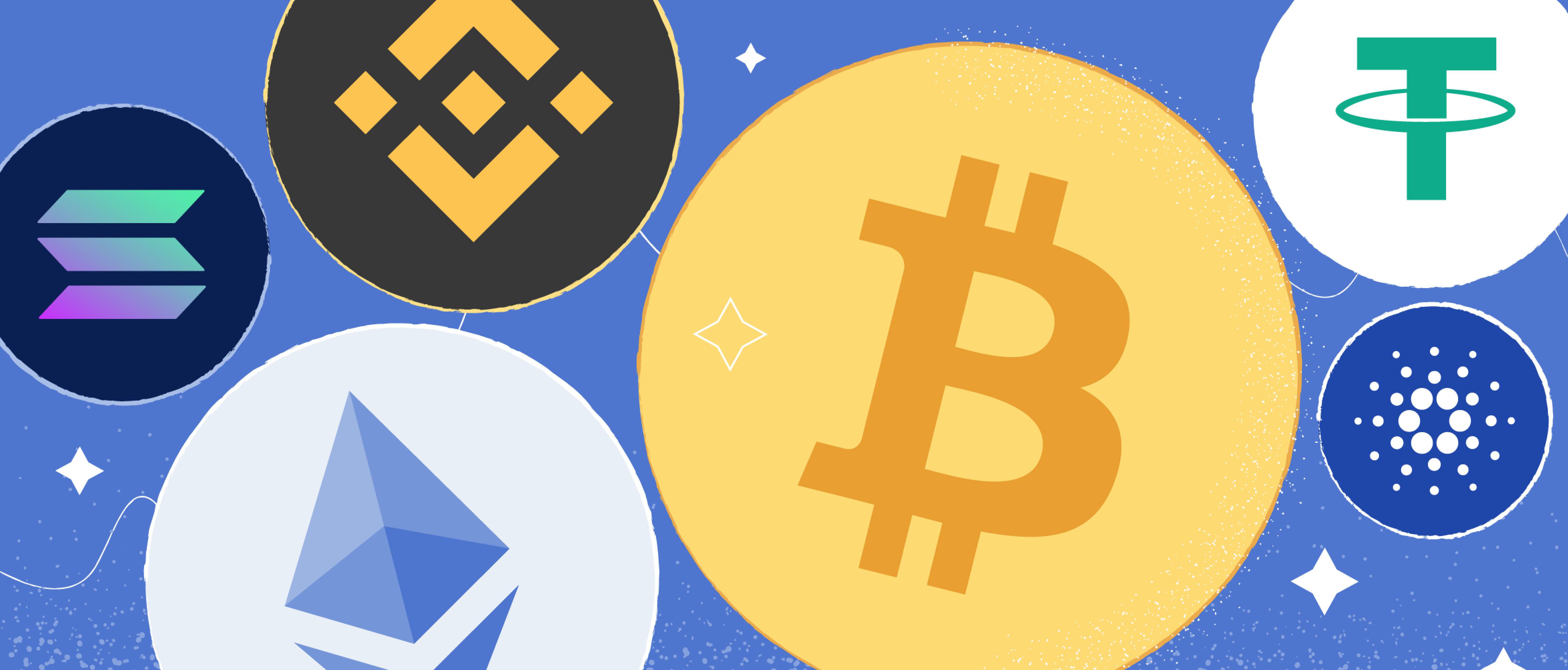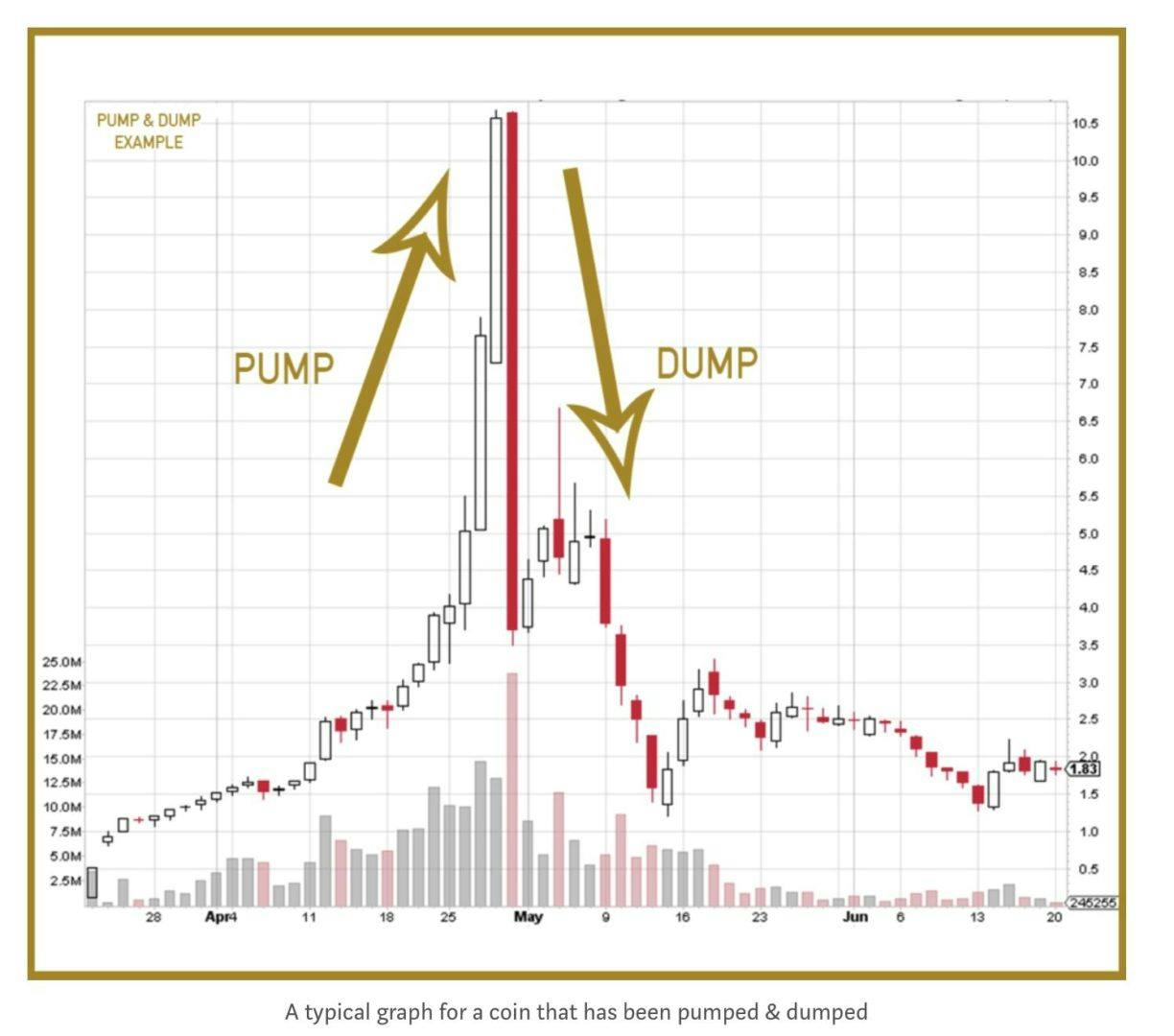
- All
- Tools
- Analytics
- Technical Analysis
- Trading
- Blockchain
- DeFi
- Guides
- Company News
- Educational
- Opinion
- Price Predictions
- Market News
- News
- Trading cases
- Practical guides
- Exchanges
- Trading signals
- Cryptocurrency
- Crypto bots
- Other
Become a crypto master
Learn everything about crypto,
trading and bots

Exploring Solana UTXO in 2025: Scaling Blockchain Transactions with Efficiency and Security
Discover the role of the Solana UTXO model in blockchain transactions. Learn about its scalability, security, and DeFi applications.
Start Trading on 3Commas Today
Get full access to all 3Commas trading tools with free trial period

Wondering what Solana UTXO is? You’ve come to the right place.
Blockchain technology has transformed a variety of industries by providing safe and decentralized platforms for digital transactions. Solana, a high-performance blockchain network, has received a lot of attention because of its scalability and unique features.
One distinguishing feature of Solana's architecture is its use of the UTXO (Unspent Transaction Output) model.
The UTXO model, made popular by Bitcoin, provides a distinctive way to control transactions within a blockchain. Solana has adopted the UTXO model as part of its design philosophy to provide its users with increased scalability, performance, and security.
This approach has helped Solana achieve amazing transaction throughput, with the ability to handle thousands of transactions per second while maintaining low fees and optimal resource utilization.
This article explores the Solana UTXO model, including its implementation, advantages, and use cases.
What is UTXO in 2025?
The Unspent Transaction Output (UTXO) model is a fundamental idea in blockchain technology that is important for transaction processing and security. Unlike certain blockchains, such as Ethereum, which use an account-based approach, the UTXO concept follows a different model.
Each transaction output in the UTXO model reflects a certain amount of cryptocurrency that is "locked" or assigned to a single address. These frozen outputs are known as UTXOs.
UTXOs are used as inputs for subsequent transactions and can only be spent as a whole. For instance, if an address receives 6 SOL (the Solana blockchain's native cryptocurrency), it will be stored as a UTXO with a value of 6 SOL.
When a user wants to execute a transaction, they must give one or more UTXOs as inputs, indicating which UTXOs they want to spend and the value of the UTXOs that should be transferred to specific destination addresses.
The transaction consumes the selected UTXOs and generates new UTXOs as outputs, representing the updated ownership of the cryptocurrency.
Benefits of the UTXO Model
The UTXO model has different benefits that make it a great choice for some blockchain applications:
Simplified Tracking of Fund Ownership and Flow
The UTXO model offers a simple and efficient technique for tracking fund ownership and flow. Each UTXO represents a discrete unit of cryptocurrency, thereby making auditing and analyzing transactions easier.
Improved Privacy
UTXOs provide increased privacy because funds are not directly linked to user accounts. The model improves the privacy of transactions by making it difficult to associate transactions with individual addresses.
Enhanced Security
The UTXO model decreases the possibility of double-spending because UTXOs are consumed and new UTXOs are created in each transaction. It ensures that each UTXO can only be spent once, removing the need for complicated methods to prevent unlawful fund use.
Improved Scalability
The UTXO model provides simultaneous transaction processing by default, thereby enabling greater scalability. Transactions can be handled concurrently since each UTXO can be processed individually, resulting in enhanced throughput and improved network performance.
Solana's Implementation of the UTXO Model
Solana UTXO model adheres to the core UTXO principles, in which each transaction's output becomes an input for the next transaction. Solana, on the other hand, adds various enhancements and optimizations to maximize performance and scalability.
The use of a fast and secure Proof of History (PoH) mechanism is an important component of the Solana UTXO model. PoH acts as a verified timestamp for the entire blockchain, allowing Solana to achieve great transaction throughput while maintaining security
Solana maintains the ordering and authenticity of UTXOs in an efficient and decentralized manner by using PoH.
UTXO Storage and Management in Solana
UTXOs are stored in a global state known as the Unspent Transaction Output Database (UTXO DB) in the Solana UTXO model.
The UTXO DB is spread throughout the validators in the network to ensure redundancy, fault tolerance, and resilience. Validators work together to maintain the UTXO database and validate transactions using UTXO inputs and outputs.
The Account Abstraction Layer (AAL) of Solana bridges the gap between the UTXO concept and smart contract functionality. The AAL allows developers to interact with UTXOs using a familiar account-based interface, thereby easing development while preserving the benefits of the UTXO model.
Unique Features and Innovations in Solana UTXO
Solana UTXO has integrated several advancements to address the limitations of existing UTXO implementations. One such integration is the implementation of Merkleized UTXO sets, in which UTXOs are structured in a Merkle tree structure.
This allows for more efficient verification and synchronization of UTXO states, improving overall network performance and lowering storage needs.
Furthermore, Solana introduces the idea of "rent," which optimizes the UTXO set by deleting unnecessary and underutilized UTXOs. Rent encourages users to clean up their UTXO sets regularly, thereby lowering total storage requirements and improving network efficiency.
The Solana UTXO model also allows cross-chain interoperability via bridging methods. It allows the transfer of assets and data between blockchains, thereby broadening the scope and utility of UTXOs beyond the Solana ecosystem.
Advantages of Solana UTXO Model
Scalability and High Transaction Throughput
Solana uses a unique combination of technologies, including Proof of History (PoH) and Tower BFT (Byzantine Fault Tolerance), a high-performance consensus method. These technologies allow Solana to achieve lightning-fast transaction processing speeds.
Solana can parallelize transaction validation and execution by exploiting the UTXO model, leading to outstanding scalability. Multiple transactions can be handled concurrently using the UTXO architecture, thereby increasing throughput.
As a result, Solana can handle thousands of transactions per second, making it ideal for applications requiring high transaction volumes and real-time responsiveness.
Lower Fees and Efficient Resource Utilization
Transactions in classic account-based models usually require accessing and updating the account state, resulting in increased computing overhead and storage requirements.
However, in the UTXO model, each transaction references a collection of UTXOs as inputs and generates new UTXOs as outputs without accessing or updating a global account state.
This helps Solana optimize the use of resources and reduce computational and storage expenses. The UTXO model enhances efficient parallel transaction processing, thereby eliminating the need for significant state updates. As a result, Solana can offer faster transaction confirmations and lower fees than other blockchain systems.
Improved Security and Transaction Privacy
Solana UTXO provides an inherent amount of security by reducing the attack surface. Since each UTXO is independent and isolated, the risk of unauthorized access or tampering with the transaction history is reduced.
Transactions in the UTXO architecture are built by consuming certain UTXOs and creating new ones, making it more difficult for attackers to control the transaction flow or alter past transactions.
Furthermore, the UTXO mechanism has the potential to improve transaction privacy on the Solana blockchain. Tracing the flow of funds and linking transactions to specific addresses becomes more difficult because each UTXO represents a unique quantity of dollars.
This feature provides enhanced privacy protection for those who value anonymity and confidentiality in their transactions.
Use Cases and Applications of Solana UTXO
The implementation of the UTXO architecture in the Solana blockchain opens up a wide range of use cases and applications. Here are some areas where the Solana UTXO model can be used:
DeFi (Decentralized Finance)
The UTXO model offers significant benefits for DeFi applications on the Solana blockchain. Solana supports the efficient execution of complicated DeFi protocols such as decentralized exchanges (DEXs), lending platforms, and yield farming due to its high transaction throughput and cheap costs.
The UTXO model also improves security and privacy, making it an excellent solution for financial applications that require trust and confidentiality.
Smart Contract Execution and Compatibility
Solana UTXO model enhances smart contract execution, allowing developers to build and deploy decentralized apps (dApps) on the blockchain. The UTXO model takes a unique approach to dealing with transactions and state changes within smart contracts, increasing efficiency and scalability.
Developers can use the Solana UTXO architecture to build unique applications in different industries, including gaming, supply chain management, identity management, and lots more.
Cross-Chain Interoperability
The Solana UTXO model promotes compatibility with various blockchain networks. The Solana UTXO model facilitates the smooth transfer of assets and data between different blockchains by using cross-chain bridges and interoperability protocols.
This opens the door to cross-chain DeFi applications, asset tokenization, and the development of decentralized exchanges capable of interacting with different blockchain networks. The interoperability of the UTXO concept with other blockchains strengthens Solana's ecosystem and encourages collaboration across the blockchain industry.
Privacy-Focused Applications
The Solana UTXO model gives users more control over their transaction history and offers greater privacy features, including secret transactions and coin mixing. As a result, Solana is an appealing platform for privacy-focused apps like decentralized markets, encrypted chat, and private financial transactions.
High-Frequency Trading and Marketplaces
The Solana UTXO model is well-suited for high-frequency trading and marketplaces due to its high transaction throughput and low latency.
The efficient transaction handling and ability to execute a huge volume of orders in a short timescale of the UTXO model can considerably benefit trading platforms, allowing for faster trade execution, greater liquidity, and reduced slippage.
Solana's UTXO concept is suitable for use in decentralized exchanges and marketplaces that require fast order matching and settlement.
Gaming and Non-Fungible Tokens (NFTs)
The Solana UTXO concept offers significant opportunities for the gaming sector and NFT ecosystems. The Solana UTXO model can enable gaming platforms that require speedy and safe in-game transactions, asset ownership verification, and smooth NFT trading because of its scalability and fast transaction confirmation times.
Solana's UTXO concept can also be used by developers to create immersive gaming experiences, NFT markets, and unique blockchain-based gaming economies.
Limitations and Challenges
The learning curve for developers accustomed to account-based models
While the Solana UTXO model has certain advantages, it also adds a learning curve, especially for developers accustomed to account-based models such as Ethereum.
Switching from managing accounts to dealing with UTXOs requires a new approach and understanding of transaction inputs and outputs. Developers may need to become acquainted with new concepts and modify their coding techniques accordingly.
Furthermore, existing tools and frameworks designed for account-based models may need to be modified or new adaptations made to suit the Solana UTXO model.
Potential complexities in handling UTXOs
UTXOs might complicate the management and tracking of transaction inputs and outputs. UTXOs are spent and new UTXOs are created with each transaction, as opposed to account-based models where balances are maintained in accounts.
This can make tracking and reconciling UTXO states difficult, especially in complicated settings with various inputs and outputs. To avoid issues such as double spending, transaction malleability, and unintended transaction failures, developers must ensure the correct management of UTXOs.
Addressing potential security and privacy concerns
The implementation of UTXOs requires careful consideration of security and privacy issues. Since UTXOs are spent one at a time, it is important to safeguard the private keys associated with each UTXO to avoid unauthorized spending.
Furthermore, since each input and output can be explicitly viewed on the blockchain, the UTXO model may influence transaction privacy.
While techniques such as currency mixing and confidential transactions can be used to improve privacy, guaranteeing robust security and privacy safeguards within the UTXO architecture requires ongoing research, development, and auditing.
Conclusion
The Solana UTXO model offers several benefits and advancements to the blockchain ecosystem. The benefits of UTXOs are combined with Solana's high-performance blockchain architecture to achieve a new level of scalability, efficiency, and security.
The UTXO approach opens up new options for developers and enterprises to build strong and scalable blockchain applications, from DeFi platforms to smart contract execution and cross-chain interoperability. It is also a good solution for migration and integration because it is compatible with current Ethereum-based apps.
Looking ahead, Solana has a plan in place to improve and develop its UTXO model. Solana seeks to consolidate its place as a leading blockchain platform by providing developers and users with an efficient, secure, and scalable environment for their apps through continual developments and upgrades.
Solana UTXO in 2025: Institutional Integration and Network Resilience
As of April 2025, Solana’s UTXO-inspired architecture continues to underpin its high-throughput capabilities, processing up to 65,000 transactions per second:
This scalability makes Solana a compelling choice for developers of automated trading bots, particularly those seeking low-latency execution in decentralized finance environments. Projects building crypto trading bot software and AI crypto bots have increasingly turned to Solana for its ability to manage large volumes of microtransactions efficiently.
Institutional interest has also accelerated. Major financial entities like VanEck and Grayscale submitted ETF applications to the U.S. Securities and Exchange Commission, signaling growing adoption across traditional finance:
The network’s infrastructure has proven reliable under pressure, recording over 408 billion transactions since its mainnet debut in 2020:
Solana’s appeal extends to automated trading systems and AI bot crypto trading, where throughput, confirmation speed, and fee efficiency are critical. Traders deploying automated crypto trading bots—whether for arbitrage, scalping, or altcoin bot trading—benefit from Solana’s parallel execution model and account-level isolation. These structural advantages help reduce slippage and increase strategy precision across volatile markets.
Its DeFi ecosystem remains robust, as demonstrated by the $12.2 billion in stablecoin supply on Solana in March 2025, indicating strong liquidity for strategies relying on crypto auto trading bots:
While Solana saw a price correction from its January peak of $295 to around $123, the underlying network has remained operational and trusted by institutional and retail participants alike:
In summary, Solana’s UTXO-based model continues to provide a scalable and secure transaction layer. Its increasing role in supporting AI crypto trading bots, automated cryptocurrency trading, and high-frequency strategies positions it as a key infrastructure layer in the next generation of blockchain-powered financial tools.
FAQ
Solana does not use UTXO. Solana uses an account-based approach, which means that the network's state is kept in a global database. This makes smart contracts and other decentralized applications easier to implement, but it also makes the network more centralized.
UTXO has several advantages over account-based solutions like Ethereum. It improves scalability, thereby ensuring increased throughput and faster confirmation times.
The UTXO model makes optimal use of resources, reducing storage and processing requirements. It improves security by eliminating the danger of double-spending attacks and increasing transaction privacy.
Furthermore, the UTXO model allows for advanced transaction scripting, compatibility with various transaction types, and the possibility of cheaper transaction fees. However, the transaction mechanism chosen is determined by specific use cases and network limitations.
Some of the most popular blockchains that use UTXO include:
- Bitcoin
- Litecoin
- Bitcoin SV
- Zcash
- Dash
- Monero
- Cardano
- Ergo
- Nervous System Network
- Qtum
UTXO (Unspent Transaction Output) is a data format that is used in blockchain technology to represent monetary units.
Each transaction in a UTXO-based system generates a new UTXO that represents the amount of money transferred in the transaction. A new transaction can only spend UTXOs that have not already been spent when it is sent.
UTXO-based cryptocurrencies differ from account-based cryptocurrencies in the manner in which they track fund ownership. Each user in an account-based system has an account with a balance. When a user transfers funds, the balance in their account decreases while the balance in the recipient's account increases.
On the other hand, each user in a UTXO-based system has a collection of UTXOs. When a user transfers funds, one or more of their UTXOs are spent, and the recipient receives the new UTXOs.

Adedamola is a highly resourceful content writer with comprehensive experience in researching and creating simple content that engage and educate the audience. He is interested in improving the marketing results of blockchain and crypto brands through great content.





